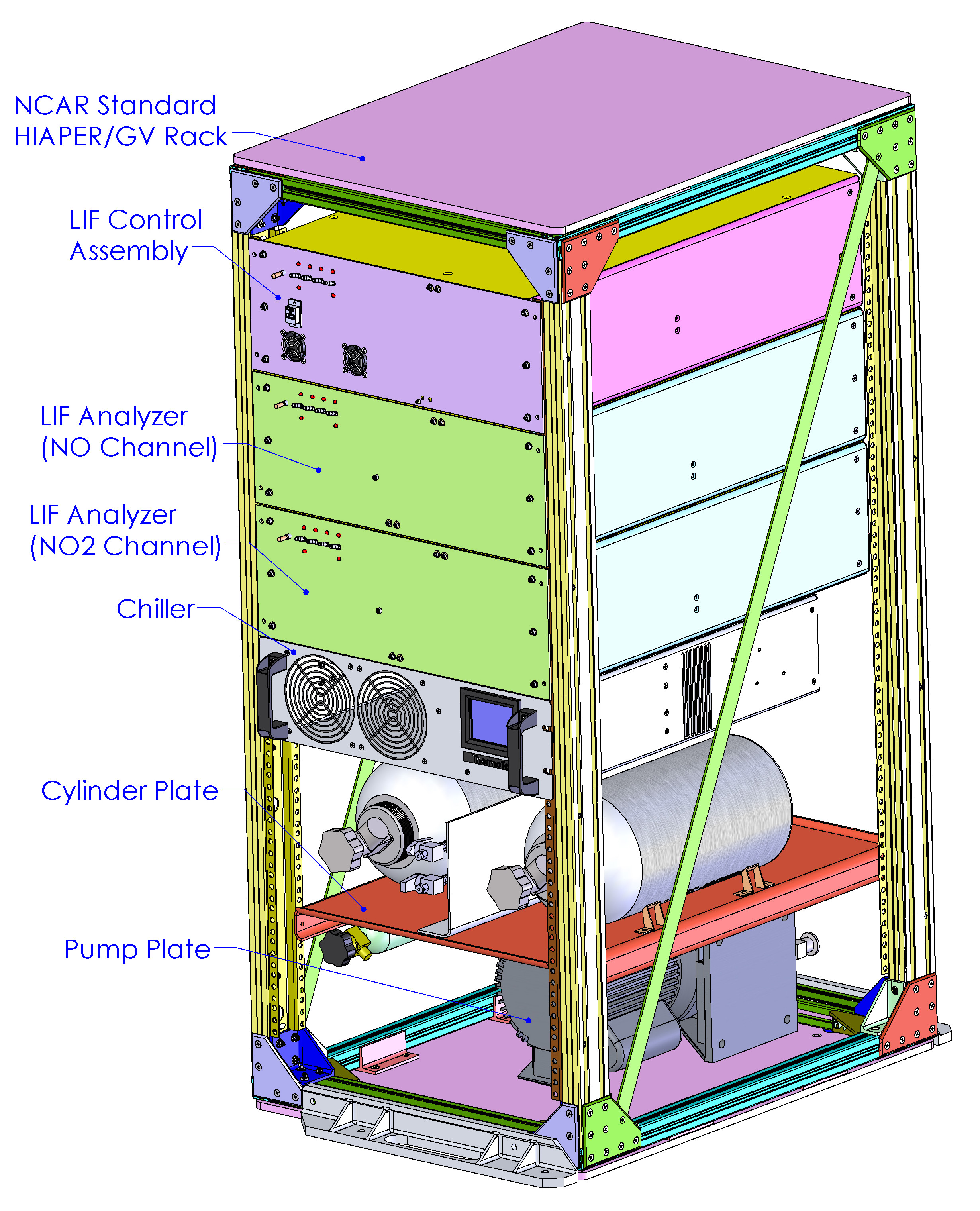NOx LIF
Laser Induced Fluorescence (LIF) NOx instrument

The LIF instrument we are currently developing is based on the design described in Rollins et al. (2020). It uses single-photon laser-induced fluorescence in the ultraviolet at around 215 nm. The technique is based on early research by Bradshaw and colleagues (1982, 1985), and Bloss et al, (2003). The new technique utilizes a pulsed, fiber coupled distributed feedback (DFB) laser tunable between 1074 and 1076 nm with narrow linewidth. The laser pulses are then amplified and passed through a series of three nonlinear crystals to produce the fifth harmonic near 215 nm wavelength, which is used to pump the NO AΠ (v′′ = 0) ← X2Π (v′′ = 0) vibronic transition. We expect to achieve performances close to the ones described by Rollins et al. (2020), i.e., a limit of detection of 1 pptv for a 1 second measurement. This is almost an order of magnitude better than the chemiluminescence (CL) technique and it's due to a much lower photon count background because of the shorter wavelength detection range compared to the near-IR of the CL technique.
References
Bloss W. J., et al., “Application of a Compact All Solid-State Laser System to the in Situ Detection of Atmospheric OH, HO2, NO and IO by Laser-Induced Fluorescence,” Journal of Environmental Monitoring 5, no. 1 (January 27, 2003): 21–28, https://doi.org/10.1039/B208714F;
Bradshaw, J. D., M. O. Rodgers, and D. D. Davis, “Single Photon Laser-Induced Fluorescence Detection of NO and SO2 for Atmospheric Conditions of Composition and Pressure,” Applied Optics 21, no. 14 (July 15, 1982): 2493–2500, https://doi.org/10.1364/AO.21.002493;
Bradshaw J. D., et al., “A Two-Photon Laser-Induced Fluorescence Field Instrument for Ground-Based and Airborne Measurements of Atmospheric NO,” Journal of Geophysical Research: Atmospheres 90, no. D7 (1985): 12861–73, https://doi.org/10.1029/JD090iD07p12861;
Ridley, B. A. and F. E. Grahek, “A Small, Low Flow, High Sensitivity Reaction Vessel for NO Chemiluminescence Detectors,” Journal of Atmospheric and Oceanic Technology 7, no. 2 (April 1, 1990): 307–11, https://doi.org/10.1175/1520-0426(1990)007<0307:ASLFHS>2.0.CO;2;
Ridley B., et al., “Florida Thunderstorms: A Faucet of Reactive Nitrogen to the Upper Troposphere,” Journal of Geophysical Research: Atmospheres 109, no. D17 (2004), https://doi.org/10.1029/2004JD004769;
Rollins A. W., et al., “Single-Photon Laser-Induced Fluorescence Detection of Nitric Oxide at Sub-Parts-per-Trillion Mixing Ratios,” Atmospheric Measurement Techniques 13, no. 5 (May 15, 2020): 2425–39, https://doi.org/10.5194/amt-13-2425-2020.